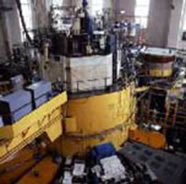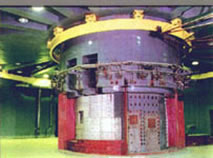Post-conference Technical Tour
Visit to Konstantinov St. Petersburg Institution for Nuclear Physics
Konstantinov St. Petersburg Institution for Nuclear Physics is one of the largest research centers in Russia, located in Gatchina, Saint-Petersburg Region.
The research center holds fundamental research related to physics of elementary particles and high energy, nuclear physics, physics of condensed environment, molecular and radiation biophysics. Besides, research is conducted in applied areas – intrumentation, healthcare and environmental protection. At present, the research center has two basic experimental units: reactor BBP-M and proton accelerator.
Research reactor BBP-M was designed for experiments in physics of condensed environment, nuclear physics, reactor physics and techniques, for applied and methodical reasearch. The reactor has the biggest number of experimental units – 17. A unique instrumentation base and experimental options of research in the active zone of the reactor.

The Konstantinov Nuclear Physics Research Center also accommodates an advanced high energy beam reactor PIK, which is the biggest in terms of fundamental and applied research. Internationally, such reactors are used as ultra-powerful microscopes. PIK’s construction is similar to advanced foreign research reactors; they are able to produce a beam characterized by parameters exceeding international analogues.

www.pnpi.spb.ru
Registration
The technical tour is included in the registration fee.
The maximum size of each group is limited and participation is on a first-come, first-served basis.
Please fill in the appropriate section of the registration form and the required information for the security check.